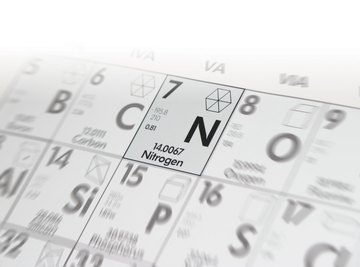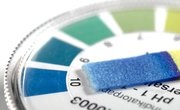
Nitrogen gas makes up a majority of Earth’s atmosphere. It has no color and no smell, so to test for its presence, you need to use a different method. Nitrogen gas can also combine with other elements to form compounds, for example, nitrate (NO3), nitrite (NO2) and ammonium (NH3).
Testing with a Katharometer
Obtain or borrow a katharometer. This device is able to detect the presence of different gasses by measuring the thermal conductivity of a gas in comparison to a known gas with a high level of thermal conductivity, such as hydrogen.
Make sure the first cell has the reference gas in it. This gas will often need to be flowing free in the cell. The device should also have a battery for generating a charge in each cell.
Expose the second cell to the gas you wish to test. Compare the thermal conductivity readings on the device between the control gas and the gas you’re testing. Consult the manual that came with the device for exact comparison readings depending on the control gas used. In general, the reading for nitrogen will be much lower than that for the control gas, as it’s considerably less conductive than test gases such as hydrogen. One example control that’s often used is helium in the reference tube with a flow of 40 milliliters per minute.
Testing with Litmus
- Katharometer
- Litmus paper
- Test tube
Use appropriate fire protection, such as goggles and a heat shield, when working with flames, because if a match is dropped into a test tube with a flammable gas, dangerous conditions could result. Unknown gasses could explode or shatter the test tube, so it pays to take all possible precautions to stay out of harm's way.
Moisten a piece of red litmus paper with filtered water. You can purchase red litmus paper at various science supply stores, and it’s also often available at pet or pool supply stores.
Place your piece of moistened red litmus paper in a test tube. Fill the test tube with the gas you want to test and stopper it.
Wait a few minutes. If the red litmus paper turns blue, it means that the test tube contains a basic gas. If the color of the paper doesn’t change, then there is no basic gas in the tube. You can then repeat the test with blue litmus paper. If it turns red, this indicates there is an acidic gas in the test tube. If both types of litmus paper fail to change color, this indicates that there is a pure elemental gas such as nitrogen in the tube.
Determine which elemental gas is likely in the tube by first filling a large flask with a wide bottom and narrow neck with the gas you want to test. Then light a match or splint and, holding it at the end, place the lit portion into the flask and observe what happens. If the flame extinguishes, then there is no oxygen in the tube, and the gas is one without any reactivity to fire, for example, nitrogen. Nitrogen gas has no reactivity to fire because it is inert. You can also drop a flaming match into a normal test tube and observe its immediate reactions before the gas escapes if no larger flasks are available.
Things You'll Need
Warnings
References
About the Author
Sam Morgan has a master's degree in environmental science and policy. Morgan has been interested in science writing since childhood, and enjoys writing about anything relating to science since it's challenging and interesting to learn about our world.
Photo Credits
Olivier Rhême/iStock/Getty Images
